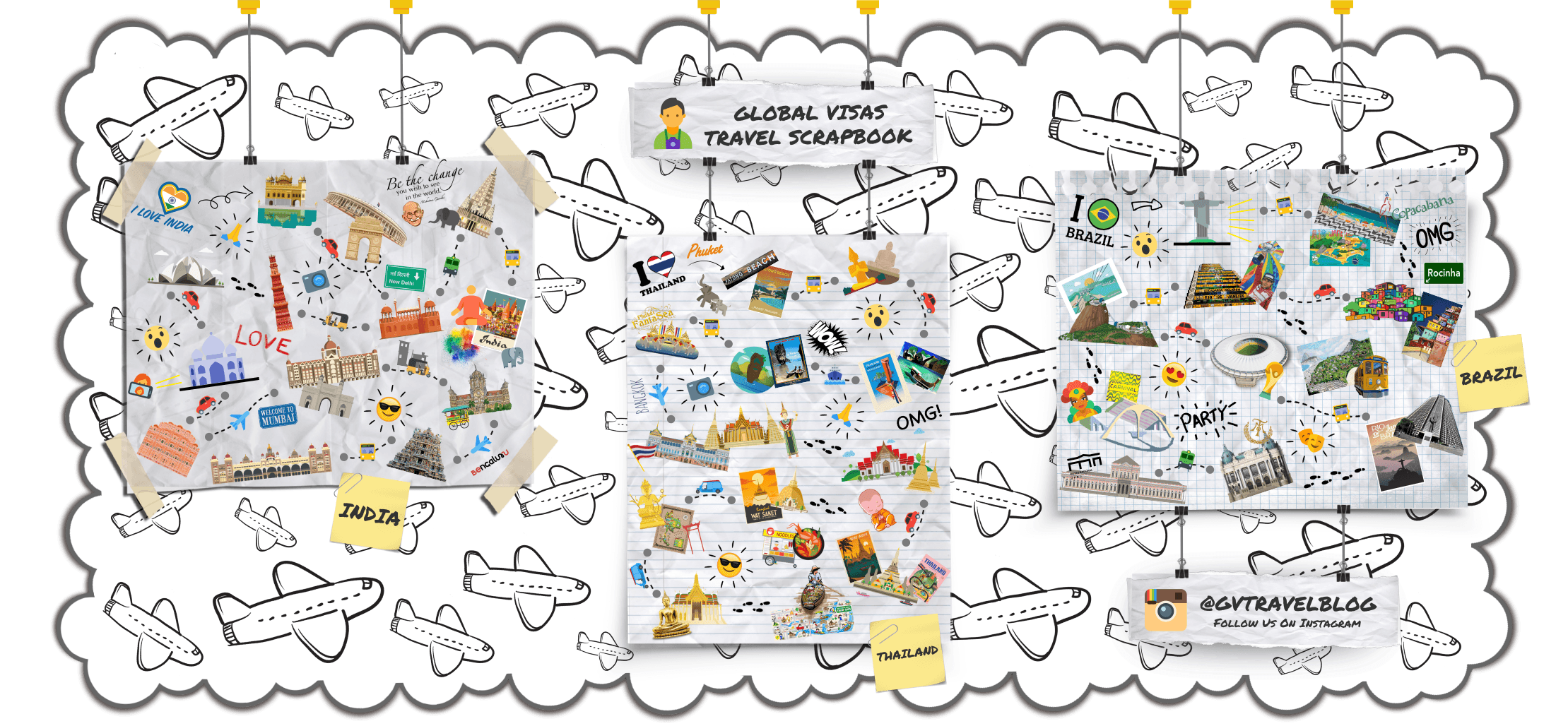BY BUS:
Argentina boasts an outstanding short and long-distance bus network. Since regional train service is limited and plane tickets are more expensive, bus travel is the most common way to travel from city to city within Argentina. It is not as cheap as it was before, with about US$4-5 for each hour of travelling (Puerto Iguazú to Buenos Aires about US$100).
In Buenos Aires, a city bus is called a colectivo or bondi while a long distance, intercity bus is called a micro or omnibus; this is not always true though, usage varies somewhat in provincial areas.. The hub of this network is definitely Buenos Aires’ Terminal de Omnibus de Retiro; it has up to 2,000 bus arrivals and departures per day, and multiple companies serve most destinations. Buses arrive and depart from a total of 75 platforms, and in order to buy your ticket you will have to choose between about 200 ticket booths situated on the upper level of the terminal.
The more expensive buses generally offer high-quality service, and for distances longer than 200 km, it is common to have food served on board. There is generally a good amount of legroom, and many buses have seats that recline horizontally into beds (called camas) making them a lot like travelling business class on a plane. The best category with completely reclining seats is normally called cama suite, but other names such as tutto leto, ejecutivo , cama vip or salon real are also in use.
Somewhat cheaper seats only recline partially (semi-camas), or not at all (servicio común). Every service belongs to one of five official comfort classes with minimum requirements that are prescribed by law in order to facilitate comparisons. The better buses will provide everything you need, while for the lower categories it may be a good idea to take drinks and food with you, as well as toilet paper and ear plugs. If the trip is really long e.g. more than 12 hours it’s definitelly better to spend a few more bucks and pay for a better bus service. If travelling with a large bag or suitcase bring a handful of coins to tip the porter that heaves your pack in and out of the taxi and bus.
Remember that, although buses usually arrive at their destination a little late, they almost always leave on time. Do not think that the relaxed approach carries over to bus departure times!
More information on bus schedules and fares is available on the webpages of the online ticket resellers Plataforma 10, Central de Pasajes. To buy tickets and to really have a choice to different bus companies you may visit Ticket Online or VoyEnBus . For buses departing or arriving in Buenos Aires, you can consult the webpages of the Terminal Retiro in Buenos Aires. A second bus terminal in Buenos Aires is situated in the Liniers neighbourhood, but it is smaller and less accessible than the one in Retiro.
For city buses in Buenos Aires you should check BA Cómo Llego (In English, also an app for smartphones) and Omnilineas (in English).
BY TRAIN:
The history of rail transport in Argentina is one of many ups and downs. While in the 19th century the rail network rivaled that of the US or many European countries in density, speed and quality as befitted a nation among the richest in the world, the declining fortunes of Argentina in the 20th century hit the railway, too. The railways were nationalized during Juan Domingo Perón’s first term and remained state-owned until they were privatized under the government of Carlos Menem. However, the railways have since made yet another U-turn and a new state-owned railway was created in 2015. The government has promoted the re-establishment of long-distance passenger trains, although most lines still operate at a low frequency (one or two departures weekly). The rail network is very limited, and intercity buses offer better service and faster rides. Train fares are very cheap, often only a quarter of the bus fare. The website is a bit hard to navigate and Spanish only.
Local travel in the Buenos Aires province is by bus and by local trains, with fast trains being the quickest way to get through the city’s traffic. The three largest train terminals in Buenos Aires are Retiro, Constitucion and Once. Retiro is a group of three train stations alongside each other with the main long distance bus (or “micro”) terminal behind the furthest of the train terminals (from the city centre).
One of the major long distance train operators is Trenes Argentinos, which departs from Retiro (Buenos Aires) to Rosario, Córdoba and Tucumán, and from Constitución (Buenos Aires) to Bahía Blanca. See also Satélite Ferroviario for up-to-date information on trains and services (in Spanish). Tickets can be bought online with a 5% discount and with credit card. Even though, it does not allow for the selection of a foreign passport ID when buying a ticket, you can enter your number (and letters) under DNI, which will be accepted in the train. For getting the needed online account, you cannot enter letters for your ID number, but just put anything, since you will be asked anew for each purchased connection.
An amazing (but quite expensive) train ride is the Tren a las nubes (Train to the Clouds) in the northwestern province of Salta, but some people may get altitude sickness. This service, which has experienced suspensions, recommenced in August 2008. The train line no longer crosses the border into Chile.
BY PLANE:
Domestic flights are available within Argentina, but tickets are pricey, and most domestic flights pass through Buenos Aires’ domestic airport Aeroparque Jorge Newbery. The main carriers are Aerolíneas Argentinas, Aerolíneas Austral (a subsidiary of Aerolíneas Argentinas) and LATAM Argentina. Aerolíneas Argentinas’ subsidiary Austral, shares its parent’s fleet, and tickets for both can be booked at the same office. The prices for tickets are double for non-residents, so be careful with publicized ticket prices.
An exception to passing through Buenos Aires for domestic flights is Aerolineas Argentinas’ “Great Circle Route”, going both ways Saturdays, Tuesdays and Thursdays BA-Bariloche-Mendoza-Salta-Iguazu-BA (and reverse on another flight both days).
If you fly on your international trip to Argentina with Aerolíneas you sometimes can get discounts on domestic flights. Sometimes you even get free flights with your international ticket but keep in mind that you probably already paid for this with the inflated price of your international ticket.
Always plan to arrive at your final destination before your flight home 2 or 3 days in advance, as Argentina, like most Latin American countries, experiences more delays and cancellations in travel than most areas of the world.
Additional smaller carriers offering domestic flights are:
- Andes Líneas Aéreas, toll-free: 0810 777-2633 (in country only). Began in 2006 with regular flights between Buenos Aires and Salta. Since then they now serve several major cities in Argentina. (updated Apr 2018)
- Avianca Argentina. Connects Buenos Aires to Rosario, Mar del Plata and Santa Fe in ATR 72 aircraft. Plans are underway to expand service to additional cities. (updated Apr 2018)
- Fly Bondi. (updated Aug 2018)
- Líneas Aéreas del Estado (LADE), +54 11 5353-2387, toll-free: 0810 810-5233 (in country only). State owned airline, operated by the Air Force, serving Buenos Aires, Buenos Aires Province and Entre Rios in the north and Chubut, Rio Negro, Santa Cruz and Tierra Fuego provinces in Patagonia with Saab 340B aircraft. (updated Apr 2018)
- Norwegian Argentina. Subsidiary brand of Norway’s Norwegian Air Shuttle to provide domestic flights from Buenos Aires and Cordoba to Mendoza, Puerto Iguazú, Neuquén, Salta and San Carlos Bariloche. Plans are underway to include international flights to Singapore via Perth from Buenos Aires and to include additional domestic and international connections out of Buenos Aires. (updated Oct 2018)
BY CAR:
Car rental is readily available throughout Argentina, though it is a bit expensive compared with other forms of transportation. Travelling by car allows you to visit locations that are hard to reach by public transportation. Patagonia, in the South of Argentina, is a popular driving location among tourists due to the breathtaking views across many miles of open land.
Argentina generally recognizes valid drivers’ licences from foreign jurisdictions. Drivers must be over 21. The rental companies will charge the renters credit card $6000 to be used in the event of an accident. They cancel this charge when the car is returned. On the rutas, in the provinces bordering other countries, the police frequently stop cars at controles policiales (“police checkpoints”) to check insurance and registration papers and drivers’ licences. They do not stop all cars, though; when you come to a control policial, drive slowly and you will usually be waved through without stopping. Near provincial borders, these controles may also involve inspection of the trunk for contraband and a mandatory two peso fee for “disinfection” or removing insects from the car’s underside by driving it over a mechanical sprayer that either sprays water or does nothing. The police have been known to set up roadblocks and demand bribes for passage, particularly around the city of Buenos Aires.
Traffic regulations in Argentina are generally the same as in Europe and the U.S., but the locals often ignore the regulations. On roads and highways it’s mandatory to have car lights on, even during daytime.
Maximum speed: 60 km/h in the city, 40 km/h on side roads and 100 km/h to 130 km/h on roads outside the city as well as on highways. There are frequent speed controls. However speed limits and lane markings are universally ignored, and running red lights is common. Most drivers treat stop signs, octagonal red signs reading PARE, as though they were “yield” signs, though some drivers ignore them completely. Within cities surrounding Buenos Aires it is proper to honk at an impending intersection and the one who honks first has right of way. Right of way is determined somewhat haphazardly by a combination of vehicle size and who arrives first. Make sure you are thoroughly confident in your driving skills before attempting to drive in Argentina.
Highways are limited to the areas around large cities. Most of the country is connected by paved unlit two-lane roads (rutas) shared by buses, cars, and large trucks. Some places are accessible only by gravel or dirt roads. Indeed, some main roads in southern Argentina are unsealed, leading to 4×4 vehicles being more popular. This is particularly the case in the south. It is important to travel with a good map ( e.g. Argentina Waterproof Road Map from World Mapping Project) and to be well informed about your route distances, road conditions and the estimated travel time. In addition to a good map the website of cochera andina publishes useful information on more than 120 routes in Argentina.
The current cost of gasoline in central and southern Argentina is approximately 6 pesos per litre. In many small towns, particularly in the north, they may ration gasoline to ensure they have enough to sell until the next refuelling truck arrives, in which case you will only be allowed to buy 30 pesos worth of fuel at a time. It’s advisable to fill your tank at regular intervals when the opportunity arises. In the Andes, the gasoline consumption of non-turbo charged engines increases due to the altitude.









